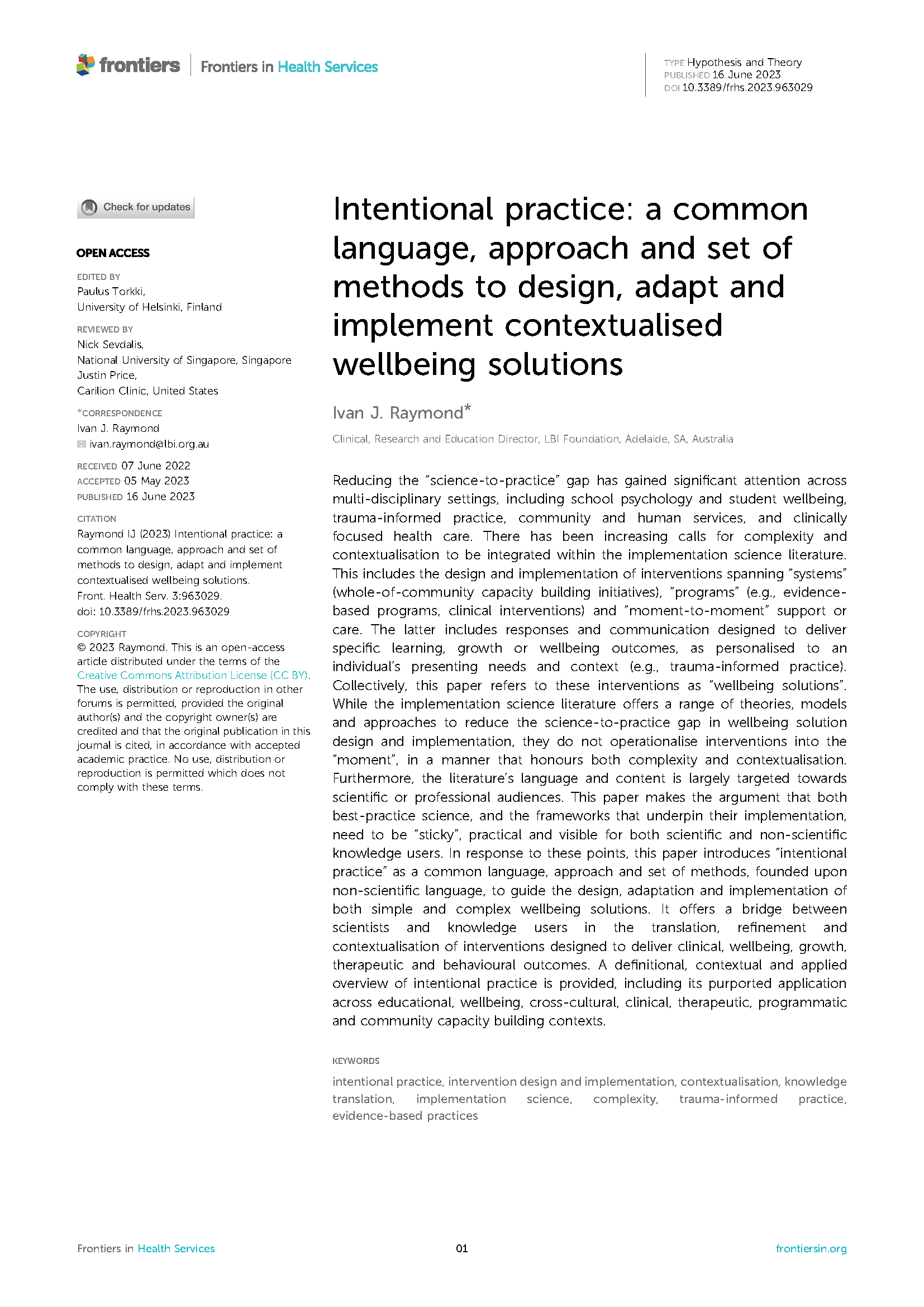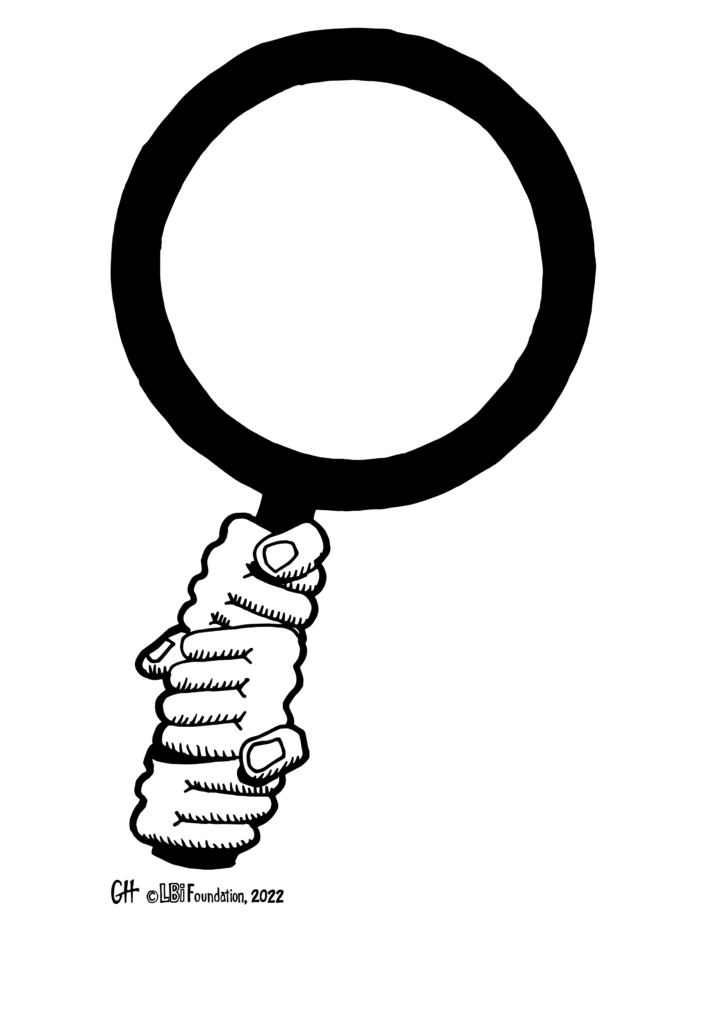What is Intentional Practice?
This page includes the common and scientific definitions of intentional practice (with explainer video). At the bottom of the page a number of local community definitions are provided.
Brief explainer
Scientific definition unpacked
“intentional practice is a common mindfulness-based language, approach (lens) and set of methods to design, adapt and implement safe and high impact wellbeing solutions from the system to the moment ” (Raymond, 2023).
Each of the underlined words is now unpacked.

"Wellbeing Solutions"
A wellbeing solution is any strategy, intervention, program or response that is designed to deliver a wellbeing, growth, learning, developmental, behavioural or therapeutic outcome.
In short, intentional practice guides the design and implementation of any strategy, program or response delivered by people, programs or systems.
"System to the Moment"
Intentional practice categorises wellbeing solutions as spanning the ‘system’ to the ‘moment’.
The term system is applied to denote a wellbeing solution that brings focus to multiple people or at a community or collective level. System-based wellbeing solutions include whole-of-school approaches, therapeutic practice frameworks and community capacity building initiatives.
The term moment refers to a wellbeing solution or response that is delivered through interactions between two or more people. For example, this may include a parent providing support to a child in distress, or a coaching or counselling intervention.
"Safe and High Impact"
The term safe means that the wellbeing solution does not cause unintentional harm, and is experienced by individual and collective community members as psychologically and emotionally ‘safe’.
High impact refers to the delivery of simple and complex wellbeing solutions associated stronger outcomes or effect sizes.
"Common"
Common refers to that intentional practice language, approach and methods are designed to be inclusive, and can be understood and applied by all community members, including those with both scientific and non-scientific backgrounds. It is designed to offer a common or unifying approach to how support, care and programs are designed and delivered.

"Mindfulness-Based"
Intentional practice can be understood as an approach or lens to how wellbeing solutions are designed and delivered. The most central lens of intentional practice is mindfulness, or mindful awareness. For this reason, intentional practice is defined as a mindfulness-based approach.
Mindfulness represents an open, non-judgemental and curious awareness to any experience or event, underpinned by focused attention. Mindfulness upholds a flexible and adaptive processing of information, and being willing to shift and change one’s worldview or frame of reference.
"Language"
Intentional practice offers a common language to support and guide all community members to design, adapt and implement wellbeing solutions.
There is a glossary of foundational language and definitions which are designed to be sticky and practical in the minds of communities, big and small (located in foundational research article – click here).
"Approach"
The term approach can be described as the way individuals, programs or communities approach the design, adaptation and implementation of wellbeing solutions through worldview, mindset and energy. It represents the direction, angle or lens that is brought to wellbeing solution formulation and delivery.
As an approach, intentional practice is analogous to the magnifying glass. A magnifying glass has both a frame and a lens. The frame is represented by seven key principles that frame intentional practice as an approach. In other words, individuals, programs and systems “hold onto” these principles.
Intentional practice as an approach can also be represented as a lens. This captures the worldview, mindset and energy individuals, programs and systems constantly hold in their mind through the design, adaptation and implementation of wellbeing solutions. There are three key features of this lens (1) mindful awareness, (2) intentionality and (3) growth.
"Set of Methods"
Intentional practice as a ‘set of methods’ (or methodology) represents the way the approach is applied or made practical across different contexts or situations.
Drawing upon the magnifying glass metaphor, it describes how the lens and principles are moved or applied. Intentional practice as a set of methods is currently made practical through: (1) models, (2) process steps and (3) critical questions.
These individual methods are explored and discussed within the application sections of this website.
Practical community definitions
We encourage you to find a practical definition of intentional practice in your own language and terms. Here are a selection of practical community definitions.
- “intentional practice is about always bringing mindful awareness to the “what” (outcomes) and the “how” (methods) in how I care and support others”
- “intentional practice means that we bring awareness to the intent and purpose to everything we do”
- “to be intentional means to be aware, always bringing focus to “what” we want to achieve, and “how” we are going to action this”
- “intentional practice means that I am meeting this person at their starting point, with deep understanding of what is happening for them, and I bring a shared intent around agreed outcomes (“what”) and strategies (“how”).

